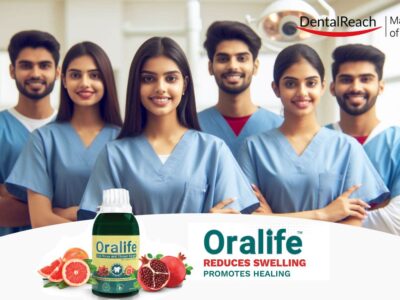Motivated by a visit to the dentist, Dr. Kate Quigley offers a novel method for tracking coral size and growth that cuts surveying time by 99%.

A new non-destructive method for quickly and safely scanning coral has been developed by Dr. Kate Quigley, a senior research scientist at the Minderoo Foundation who conducted the research at the Australian Institute of Marine Science and James Cook University, replacing earlier time-consuming and laborious surveying techniques.
Dr. Quigley made the comparison between coral and teeth after going to the dentist because both are calcium-based and call for measurement instruments that can endure moist surfaces.
"One day, I was at the dentist, and they rolled out this new scanning machine. I knew immediately that it was something that could apply to scanning very small corals given corals and teeth actually share many similar properties. The rest is history!" says Dr. Quigley.
One of the most productive ecosystems on earth, coral reefs offer vital nutritional and defensive functions to people worldwide. These significant ecosystems have experienced substantial reductions in recent decades, which has sparked a frenzy of research into the fundamental biology and restoration of these ecosystems. Scientists can forecast ecological changes, the effects of disturbance, and the possibility of recovery by understanding the crucial life stage of young coral.
Understanding coral's health and how it responds to stressors like climate change and acidity can be learned by reconstructing coral 3D models. There are several ways to create and evaluate these 3D models, but they are less successful when measurements are made at tiny scales.
Dr. Quigley said: "At the moment, it is difficult to accurately measure tiny objects in 3D, especially if you are interested in measuring small live animals, like coral, without hurting them.
"During my Ph.D., it would take half a day to produce one scan, and I was interested in scanning hundreds of corals at a time.
"For the first time, this new method will allow scientists to measure thousands of tiny corals fast, accurately, and without any negative health impacts on the coral. This has the potential to expand large-scale monitoring of ocean health and for up-scaling coral reef restoration."
Dr. Quigley took measurements of young corals at the National Sea Simulator of the Australian Institute of Marine Science in order to evaluate the efficacy of these dental scanners. The coral from the Great Barrier Relief was temporarily taken from their indoor aquarium, and before it was put back, its surface area and volume were measured.
The time needed to perform such measurements was reduced by 99%, taking an average of fewer than three minutes to scan and generate a model of each individual coral as opposed to nearly four hours with earlier techniques. Models of dead skeletons and living coral tissue were measured and compared, and Dr. Quigley found that both types of tissue performed equally quickly and precisely. removing the requirement for live animal sacrifice for measurement.
Dr. Quigley evaluated juvenile corals at the Australian Institute of Health and Welfare to evaluate the efficiency of these dental scanners, specifically the ITero Element 5D Flex. While this represents a significant improvement in the amount of time spent monitoring and researching small marine species, 3D scans still require manual processing, which slows down analysis. Dr. Quigley is hoping that the next step in this research will be to use AI to maybe build an automated analysis pipeline from scanning to measurement.
This technology can currently only be used to take measurements outside of water. The National Sea Simulator of the School of Marine Science uses confocal laser technology, hence the gear is not waterproof.
"Potentially the scanner could be made completely waterproof. However, it is unclear how well the laser technology would work completely submerged underwater. We had taken this technology on the boat before and brought up wild and laboratory-reared corals for measurement, so we are getting there!"
Source: Methods of Ecology and Evolution




















Comments